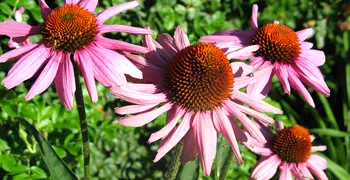How Do I Choose and Use Essential Oils?
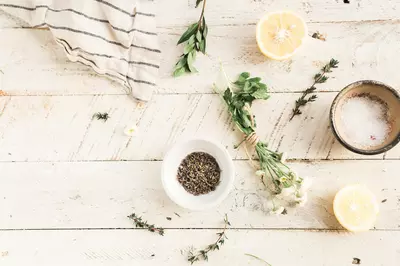
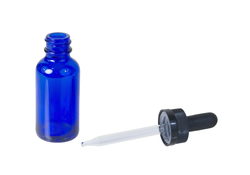 The essential oil that you choose will depend on the purpose—do you want it to help elevate your mood or do you need something to treat a burn? There is no definitive list that specifies which essential oil is used to treat which health condition. For example, while the essential oils of lavender, chamomile, basil, Frankincense, are generally found to have a calming effect and may help with anxiety and bergamot and peppermint oil are stimulating and can help those with depression, this is somewhat individual. So you need to be proactive about doing research and talking with qualified aromatherapists or other individuals with training in using essential oils.
The essential oil that you choose will depend on the purpose—do you want it to help elevate your mood or do you need something to treat a burn? There is no definitive list that specifies which essential oil is used to treat which health condition. For example, while the essential oils of lavender, chamomile, basil, Frankincense, are generally found to have a calming effect and may help with anxiety and bergamot and peppermint oil are stimulating and can help those with depression, this is somewhat individual. So you need to be proactive about doing research and talking with qualified aromatherapists or other individuals with training in using essential oils.
A good place to start is to get a book about therapeutic aromatherapy. There are many good books available and you will be able to find one that matches your needs.
Be sure to pay attention to cautions for each essential oil and application method. We provide some tips and examples in this section, but it is important to dilute the oils properly, consider your individual reactions, and watch closely for adverse effects.
How do I use essential oils?
Essential oils enter the body primarily in three ways—applied to the skin, inhaled, or ingested. Within each of these, there are many different kinds of application methods. For example, you can apply essential oils topically using compresses, sprays, baths, or massaging them into the skin.How do I choose a method to apply essential oils?
The application method chosen depends on the desired effect and the essential oil selected. For example, some essential oils are irritating to the skin because of their chemistry. These would need more dilution or might better be used by inhalation.
Once you have purchased an essential oil, the application method depends on the condition to be treated and the desired effect. Some tips:
- Wound care most often involves topical applications.
- Mood effects might be addressed by either inhalation or topical application. For fast action, inhalation might be preferred.
- Baths involve both inhalation and topical absorption.
Note: If you are unsure about which application method to use with essential oils, consult an qualified aromatherapist.
How can I inhale essential oils?
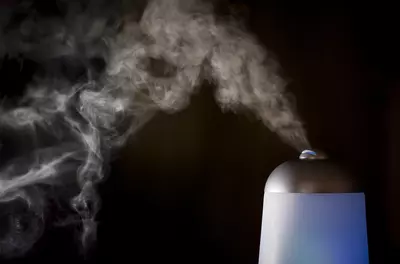
Diffuser
Essential oils are placed in this device, sometimes with water (be sure to read the directions), and sometimes with heat so they evaporate. This is a good way to add the scent of an essential oil to a room, for example to add lavendar if you want to enhance relaxation in a yoga session or class. Essential oils should never be directly burned as the chemical structure is dramatically changed with incineration (Buckle, 2003).
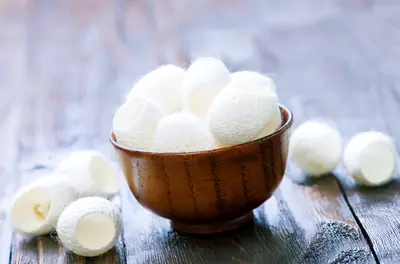
Dry evaporation
Several drops of essential oil are placed on a cotton ball or tissue and allowed to evaporate into the air. If you want an intense dose, sniff the cotton ball. If a milder, more constant exposure is desired, simply keep the cotton ball in your immediate vicinity (for example, leave it sitting on your desk next to your computer).
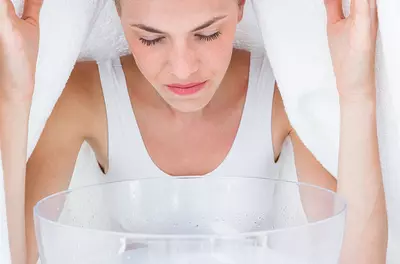
Steam
Drops of essential oil are added to a bowl of steaming water, which quickly vaporizes the oil. Place a towel over your head and over the bowl of water with essential oil drop(s) and breathe deeply. This method is very direct and potent—the use of more than 1-2 drops may be overwhelming. It is important keep the eyes closed when using this method. The use of eucalyptus essential oil in this way can feel helpful with upper respiratory and sinus infections Note: This is not recommended for children younger than 7 years old. Children older than 7 can use swimming goggles to protect their eyes.

Spray
Drops of essential oils are placed in a water-based solution, shaken, and sprayed into the air in order to deodorize a room or set a mood. An example might be spraying an aqueous solution of pine or citrus oils to enhance holiday feelings or a solution of peppermint oil to stimulate alertness. You might also want to use a solution of water and your favorite essential oil as a yoga mat cleaner. It is important to shake the bottle before spraying in order to spray the solution and not just water.
How do I apply essential oils topically?
Essential oils can be applied to the skin using a variety of techniques. It is important to note that most essential oils cannot be applied directly to the skin without being diluted.
How do I prepare a solution?
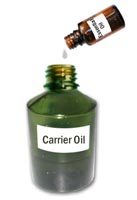 As a rule of thumb, essential oils should be diluted in a carrier substance (vegetable or nut oil, or water) at no greater concentration than 3-5%.
As a rule of thumb, essential oils should be diluted in a carrier substance (vegetable or nut oil, or water) at no greater concentration than 3-5%.
That means if you have one teaspoon (5cc) of carrier, you would add 3 drops of pure essential oil. This would make a 3% solution that could be used on a portion of the body.
For massage or for application over large areas of the body, a 1% solution (meaning, one drop of essential oil in one teaspoon of carrier) is generally a safe concentration. For infants, using a 0.25% solution is recommended (.5% for toddlers).
Note: If you use water as a carrier, be sure to shake or mix your solution well before application.
What carrier oil should I use?
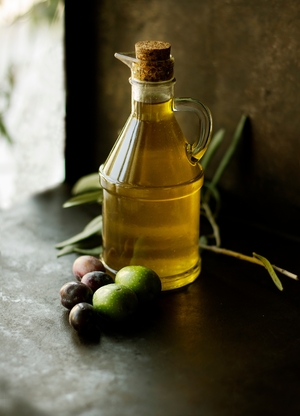 Common carrier oils are often available in natural foods stores or stores that specialize in natural bath and body products. Organic and cold-pressed carrier oils are preferred, and examples include sweet almond oil, apricot kernel oil, grapeseed oil, jojoba oil, or avocado oil. These oils do not have a strong smell of their own. They should be kept refrigerated until used and should be discarded if they smell rancid. (Oils typically keep about a year if refrigerated.)
Common carrier oils are often available in natural foods stores or stores that specialize in natural bath and body products. Organic and cold-pressed carrier oils are preferred, and examples include sweet almond oil, apricot kernel oil, grapeseed oil, jojoba oil, or avocado oil. These oils do not have a strong smell of their own. They should be kept refrigerated until used and should be discarded if they smell rancid. (Oils typically keep about a year if refrigerated.)
For wound care, an ideal essential oil would be gentle to the skin and antimicrobial. Some essential oils can be used in different ways. For example, true lavender essential oil (Lavandula angustifolia) can be used on the skin for cuts and minor burns, and it can be inhaled to promote relaxation and sleep. Lavender is one of the few essential oils that can be used undiluted on small areas of the skin.
What are the techniques?
Compress
The essential oil is diluted in a liquid carrier (water or oil) and applied to a dressing or directly to the affected area. Optional heat or cold can be applied.
For example, a few drops of ginger (Zinziber officinalis) essential oil can be added to comfortably hot water and mixed to disperse the oil; then a cloth can be soaked in the solution and placed on a stiff joint. Additional heat can be applied as desired.Gargle
Drops of essential oil are added to water. You mix, then gargle the solution and spit it out. Do NOT swallow it. For example, one drop of tea tree oil in a glass of water can be gargled for sore throat discomfort.Bath
Drops of essential oils are added to bath water in a dispersant immediately before stepping in. This method results in absorption through the skin, as well as inhalation of the volatilized essential oil. A few tablespoons of full cream milk can be used as a dispersant.
Remember, essential oils are not water soluble; thus they will float on top of the bath and skin passing through the oil will be exposed to full strength essential oil. Bath salts can also be used to disperse essential oils. A relaxing bath base can be made by mixing one part baking soda, two parts Epsom salts, and three parts sea salt. Add six drops of true lavender essential oil to about two tablespoons of this mixture and mix it into bath water just before entering.Massage
Drops of essential oil are added to a natural carrier oil and applied to skin areas with gentle rubbing. As noted earlier, massage blends should not exceed 1% concentration of essential oils (one drop in a teaspoon) for adults. For children, concentration should not exceed 0.25% for infants, 0.5% for toddlers age 6 months to 2 years, and 1% for children 2 years and older. The choice of essential oils for massage depends on the desired effect.
How does internal application work?
 Essential oils can be applied internally in several ways, including oral ingestion and suppositories, but remember that in the U.S. the ingestion of essential oils is only recommended under the supervision of a licensed healthcare provider.
Essential oils can be applied internally in several ways, including oral ingestion and suppositories, but remember that in the U.S. the ingestion of essential oils is only recommended under the supervision of a licensed healthcare provider.
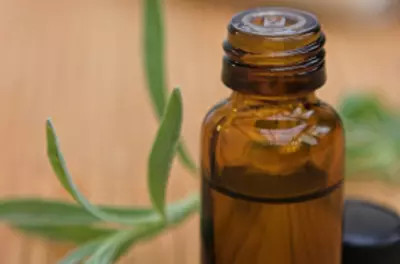
Learn more with our in-depth online course
The experts at the Earl E. Bakken Center for Spirituality & Healing have created a fully online 15-hour course on the clinical use of essential oils available on the Coursera platform. The course provides an overview of essential oil therapy and current aromatherapy practices. It gives you the skills to cut through the misinformation to safely and appropriately use aromatherapy.
Buckle, J. (2003). Clinical aromatherapy: Essential oils in practice, 2nd Ed. Edinburgh: Churchill Livingstone.
England, A. (2000). Aromatherapy and massage for mother and baby. Rochester, Vermont: Healing Arts Press.





